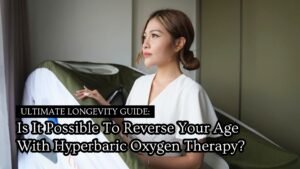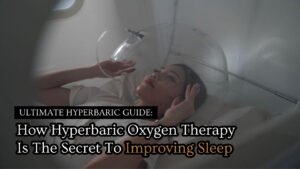In a randomized, prospective trial, hyperbaric oxygen therapy (HBOT) was investigated as a potential treatment for post-stroke patients. The study aimed to assess the effects of HBOT on inducing late neuroplasticity in this patient group. The results of the trial indicated that HBOT may indeed promote neuroplasticity in post-stroke patients, offering promising potential for improving their recovery and functional outcomes. This suggests that hyperbaric oxygen therapy could be a valuable addition to stroke rehabilitation strategies.
Background: Recovery after stroke correlates with non-active (stunned) brain regions, which may persist for years. The current study aimed to evaluate whether increasing the level of dissolved oxygen by Hyperbaric Oxygen Therapy (HBOT) could activate neuroplasticity in patients with chronic neurologic deficiencies due to stroke.
Methods and Findings:
A prospective, randomized, controlled trial including 74 patients (15 were excluded). All participants suffered a stroke 6–36 months prior to inclusion and had at least one motor dysfunction. After inclusion, patients were randomly assigned to “treated” or “cross” groups. Brain activity was assessed by SPECT imaging; neurologic functions were evaluated by NIHSS, ADL, and life quality. Patients in the treated group were evaluated twice: at baseline and after 40 HBOT sessions. Patients in the cross group were evaluated three times: at baseline, after a 2-month control period of no treatment, and after subsequent 2-months of 40 HBOT sessions.
HBOT protocol: Two months of 40 sessions (5 days/week), 90 minutes each, 100% oxygen at 2 ATA. We found that the neurological functions and life quality of all patients in both groups were significantly improved following the HBOT sessions while no improvement was found during the control period of the patients in the cross group. Results of SPECT imaging were well correlated with clinical improvement. Elevated brain activity was detected mostly in regions of live cells (as confirmed by CT) with low activity (based on SPECT) – regions of noticeable discrepancy between anatomy and physiology.
FAQS
Q1: What is hyperbaric oxygen therapy (HBOT)?
A1: Hyperbaric oxygen therapy (HBOT) is a medical treatment that involves breathing pure oxygen in a pressurized chamber. The increased atmospheric pressure allows the lungs to absorb more oxygen, which can promote healing and potentially improve various medical conditions, including those related to stroke recovery.
Q2: What is neuroplasticity, and why is it important for post-stroke patients?
A2: Neuroplasticity is the brain’s ability to reorganize and adapt by forming new neural connections throughout life. It is crucial for stroke patients because it can enable the brain to compensate for damaged areas and regain lost functions, such as movement, speech, and cognition.
Q3: What was the purpose of the randomized, prospective trial mentioned in the study title?
A3: The trial aimed to investigate whether hyperbaric oxygen therapy could induce late neuroplasticity in post-stroke patients. It sought to assess whether HBOT could improve the brain’s ability to adapt and recover after a stroke.
Q4: What were the key findings of the trial regarding HBOT and neuroplasticity in post-stroke patients?
A4: The trial’s results suggested that HBOT had a positive impact on inducing late neuroplasticity in post-stroke patients. This means that HBOT may help improve recovery and functional outcomes for individuals who have experienced a stroke.
Conclusions:
The results indicate that how Hyperbaric Oxygen Induces Late Neuroplasticity in Post Stroke Patients can lead to significant neurological improvements in post stroke patients even at chronic late stages. The observed clinical improvements imply that neuroplasticity can still be activated long after damage onset in regions where there is a brain SPECT/CT (anatomy/physiology) mismatch.






